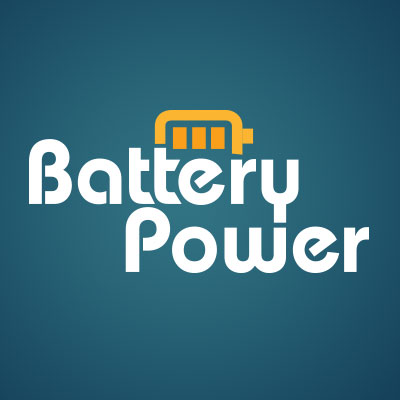By Kyle Proffitt
July 16, 2025 | At the 15th international Advanced Automotive Battery Conference Europe held in Mainz, Germany, June 23-26, 2025, we heard from several automotive OEMs in keynotes and additional presentations, discussing very high power batteries for hybrids, which newer chemistries they are focused on, and how these chemistries can be integrated into standard form factor battery packs.
Porsche: Ultra-High Power Hybrid Batteries
Otmar Bitsche, Director of Battery Systems at Porsche AG, delivered the first keynote at the 2025 Advanced Automotive Battery Conference Europe, discussing a new high-power hybrid solution. Porsche did not come to discuss miles per gallon efficiency improvements; the battery pack in this vehicle is there to maximize power and performance.
Their recent solution is a t-hybrid powertrain on a 911 that is now part of the production GTS model. This includes a battery pack up front— a 400 V lithium-ion system harboring just 1.9 kWh of energy—which is about the same weight as a normal lead acid battery. Compared to typical all-electric batteries, the specs aren’t initially outstanding— just 71 Wh/kg and 112 Wh/L.
But according to Bitsche, “the most impressive data are really the power we can provide by this battery pack.” It provides 29 kW of continuous power and a maximum 50 kW output. To accomplish this, Bitsche says the battery operates at C rates just under 30. For context, production all-electric vehicles might drain the battery at 6C under hard acceleration, but those battery packs are often 30-50 times larger, so they can produce much more power. Getting 50 kW out of a 1.9 kWh battery is a feat. Formula 1 hybrid solutions do push these C rates yet higher, but those are not consumer vehicles with demands the Porsche must meet, such as operating at -25 °C or lasting for years of use.
The GTS 911 also has a 3.6 L boxer gasoline engine, a single electric motor on the rear axle, and an electric turbocharger. The turbo offers some unique advantages. Normally, the function of a turbocharger is to use exhaust gas to spin a turbine to drive a compressor and feed compressed air into the engine, thus increasing the oxygen content and the power from each combustion event. An e-turbo can also harvest the energy from the spinning turbine. In addition to traditional braking energy regeneration, “we used the exhaust gas to regen the battery,” Bitsche said. Additionally, the battery can power and spin the turbo directly and provide boost pressure before the gas engine produces sufficient exhaust; then, once the e-turbo is producing electricity from exhaust gas, that energy can go into the electric motor or back to the battery. There is thus a dynamic balance of storing and releasing energy among these components. “This is really a very complex strategy but helps to give overall better performance and also better efficiency for the vehicle,” Bitsche said.
Bitsche discussed specifics on the battery pack, which he said “needs extremely fast and reliable power response.” It’s composed of 108 parallel pairs of 21700 cylindrical cells, and those pairs are then connected in series. They’re using NMC-622/graphite, 2.5 Ah, 9 Wh cells. “We designed this cell dedicated for this very high power demand, from the electrode to the cell design, with the continuous tabbing… for this very very high performance application,” Bitsche explained. Operating between 30 and 70% SOC, he said they are able to provide full power. The internal resistance of each cell is < 7 mΩ, superior to most other cylindrical power cells that typically have resistance exceeding 10 mΩ. He also explained that they “have minimum resistance not only in the cell but also in the cell interconnects and all the cell connectors.”
To maintain the demands of continuous 29 kW power output, the pack needs to deal with heat, and there’s a carefully planned cooling system. “We use a standard water-glycol system but with a very complex design of the cooling plate,” Bitsche said. A graphic showed cooling on both the sides and bottom of individual cells. With this design, he said they can get 2.4 kW of heat out of the battery pack continuously.
To demonstrate the efficacy of their design, Bitsche showed race data from the famous Nürburgring. In less than 8 minutes of hard driving, the battery pack cycles in delivering nearly 50 kW of power and recharging, but the temperature only increases from 30 °C to about 50 °C.
The improvements from this battery become clear when comparing the 911 with and without the t-hybrid setup. In 2.5 seconds, the 911 Carrera GTS covers 14.5 meters, but the t-hybrid variant is 7 meters ahead. Racing to 100 km/h, the GTS takes 3.4 seconds, but the t-hybrid can do it in 3 seconds flat. This all culminated in shaving 8.7 seconds off the prior model’s best time at the Nürburgring with the updated GTS.
Volkswagen Bets on New Chemistries: Sodium-Ion, LNMO, Solid-State
Volkswagen AG Head of Technology Development and Simulation Battery Cells and Systems Rouven Scheffler discussed battery technology in their range of vehicle offerings. He pointed out that within the battery division, PowerCo group is a cell supplier, whereas the Center of Excellence, of which he is a member, develops battery systems, working with both PowerCo and other manufacturers’ cells. He began with a focus point: an EV battery accounts for approximately 40% of the cost of the vehicle, so for the batteries, “it’s really important to bundle up all the competencies, all the know-how into one organization,” he said. “This is done with the Center of Excellence.”
Volkswagen opts for a unified cell approach, a standardized prismatic form factor, intended to be used in 80% of EVs across its brands, that is amenable to different chemistries. Currently this is limited to NMC for range and performance and LFP for affordability. But Scheffler used his address to provide a future outlook, including their vision for sodium-ion, lithium nickel manganese oxide (LNMO), and solid-state batteries, considering how these technologies might work in their unified approach.
With regard to sodium-ion, Scheffler said that “to be really free of lithium, it makes sense for us to step into this technology” and recited the advantages in cost and availability, which would enable regional independence in manufacturing. For automotive applications, he said the sodium-iron-manganese (NFM) cathode is the most promising, coupled with hard carbon anode. This chemistry should allow manufacture on existing NMC and LFP lines. Currently, they are looking at sodium-ion energy density of about 140 Wh/kg and 310 Wh/L, but they are aiming for 200 Wh/kg by 2032, at which point it would become comparable to LFP energy density. An advantage of sodium-ion batteries is better performance and higher efficiency at low temperatures compared with LFP. However, they have a wider voltage window (2-4 V) compared with standard lithium-ion cells, which can create some difficulties with battery management systems and smooth power delivery, requiring additional electronic components. “At the moment, nobody has big fleets of sodium-ion on the market, because it’s not a business case yet,” Scheffler said. However, with efforts to reduce costs and increase density, he says we should see this technology kicking in within a few years.
Scheffler said LNMO is a promising cobalt-free alternative chemistry. Again, this would provide flexibility in the supply chain, as cobalt is a critical material with few sources. Current LNMO technology allows 245 Wh/kg and 600 Wh/L, and VW aims to increase these values to 270 Wh/kg and 650 Wh/L by the early 2030s. However, to achieve this density, he said it is necessary to bring the voltage up to and above 4.7 V, which can create problems with electrolyte stability and manganese dissolution, again requiring additional electronic components and unique solutions.
Finally, solid state batteries were discussed. Here of course the liquid electrolyte is replaced by solid alternatives. Scheffler said these come in several flavors but, “at VW, we focus on the oxidic path because we do see that this is the most promising candidate; it is very stable against lithium, also against humidity in the production.” This lines up well with the up to 80 GWh manufacturing agreement between QuantumScape, which uses ceramic electrolyte widely believed to be LLZO, and PowerCo. In contrast, Alvaro Masias of Ford Motor Co, speaking at the International Battery Seminar and Exhibit in March, said they believe sulfide separators are the most promising for solid-state batteries. “We think they’re the most processable and allow you to have closest to performance of liquid lithium-ion,” Masias said.
Independent of the separator, the solid-state approach enables the use of lithium metal anode, which gives a jump in energy density, up to 400 Wh/kg and 1000 Wh/L, Scheffler reports. Drawbacks are temperature-dependent ionic conductivity in the electrolyte, swelling, and the standard concerns about needing intimate contact between layers. Scheffler also listed scale-up of separator production as a major challenge. Because of the swelling issue, solid-state cells are not as straightforward as LNMO or sodium-ion to incorporate into the unified cell format. However, he showed three ways this could be easily addressed: individual cells can be incorporated into volume expansion units that go into the pack, the volume expansion sections could be part of the unified cell pack, or external pressure can be applied.
Mercedes and General Motors Weigh In
Mercedes Senior Manager Tobias Handschuh also discussed future solid-state battery design. Mercedes is also working on a standardized battery pack format, composed of 4 banks of 48 prismatic cells. For the incorporation of a solid-state cell to enable swelling and breathing, they have seemingly adopted elements of all three solutions that Scheffler of VW discussed.
“Our solution was a cell carrier which can be stacked to a bigger cell stack. This cell stack is not mounted into the battery but it can float on a defined path,” Handschuh said. It appears that the individual cell carriers might leave room for expansion, similar to the Flexframe design from QuantumScape, and by letting the stacks “float”, they can expand into space within the pack. Finally, pressure is used. Handschuh continued, saying, “Pressure on the cells in every position is constantly maintained by pneumatic pistons.” In his diagram, the four stacks of 48 cells are parallel; the first two pneumatic pistons are arranged at one end of the first two stacks, whereas the other two pistons are on the other end of the remaining two. This arrangement will “make sure that for every SOC, they maintain the center of gravity of the battery,” Handschuh explained. He further detailed that they have incorporated a wireless battery management system and use thinner but stronger side beams, all enabling cell energy density up to 450 Wh/kg and a 25% increased range for the same size and weight pack. Considering that the new CLA sedan is able to achieve a range of up to 792 km (492 mi), a 25% increase would yield 615 miles of range.
General Motors battery engineer Andrew Oury made some promising statements about another newer battery chemistry they’d like to bring to market—the lithium manganese-rich (LMR) cathode. “We’re confident based on test data and samples that we’ve made, that we’ve cracked the code on LMR, where we will have between 60% to 70% manganese and around 30% or 40% nickel.” According to a GM press release, the composition of this material is “around 35% nickel, 65% manganese, and virtually no cobalt.” Oury said LMR cells they’ve manufactured deliver 33% higher energy density compared with today’s best performing LFP cells, but at a cost comparable to LFP.
GM currently offers the Chevrolet Silverado EV Work Truck with 492 miles of range using high nickel chemistry, which according to Oury is, “far above what any other EV trucks in the market can do.” In an LFP variant, the same truck “can deliver around 350 miles of range while saving nearly $6,000 per battery pack.” But with LMR, “we can deliver that low cost value across a broader range of the electric trucks that we offer… we will get over 400 miles of range in the same vehicle, in the same battery pack space claim using LMR.” Price parity with LFP would make this an attractive option.







